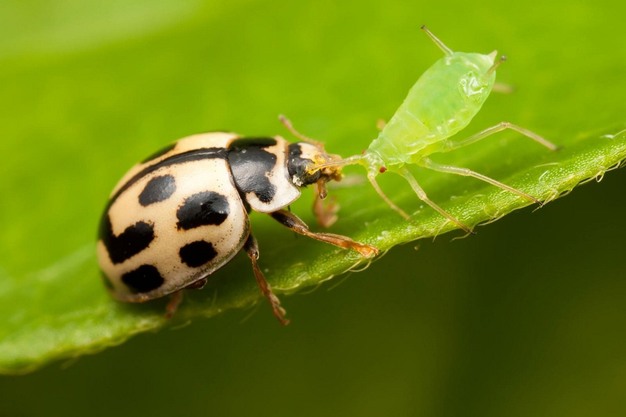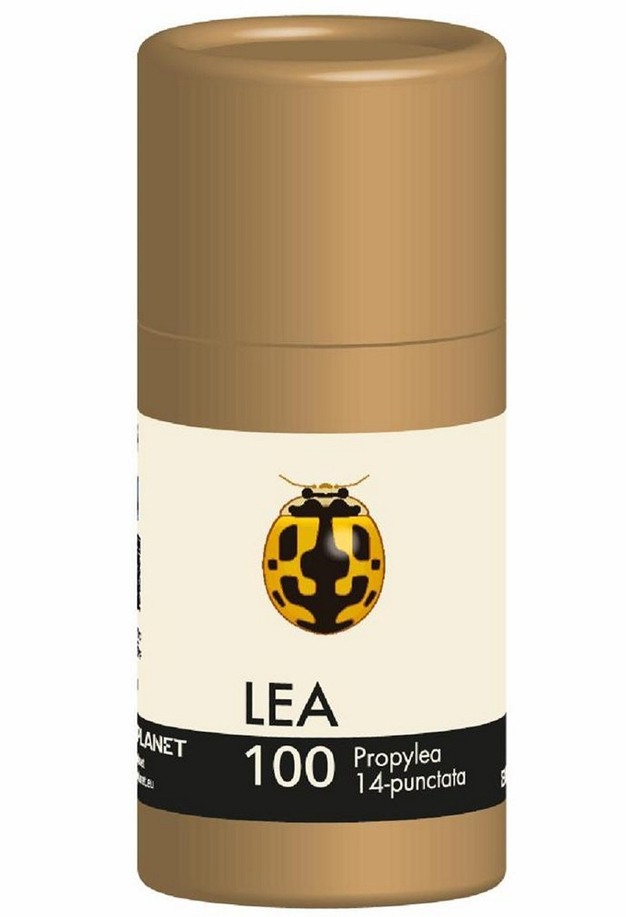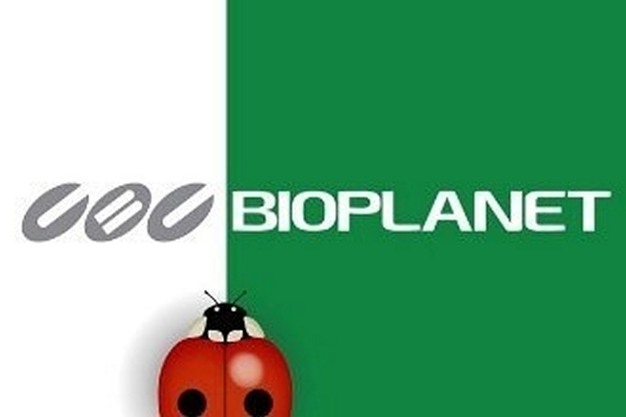Propylea quatordecimpunctata ladybirds represent an effective solution in the biological control of aphids. "One of the distinguishing features of aphids is their ability to reproduce very quickly as they are largely a parthenogenetic reproductive species, which means that females can directly produce neanids without being fertilised by males. This allows them to proliferate rapidly and colonise plants in large numbers," explains Stefano Foschi of Bioplanet (now part of CBC Europe srl - Div. BIOGARD),
Biological control by means of auxiliaries is based on the activity of parasitoids and predators, which are used preventively or when the phytophagus insect is first detected, precisely because of the aphids' extremely rapid ability to colonise plants and the consequent difficulty in curbing well-formed colonies.
"As a general rule, small repeated parasitoid introductions are made, often taking into account the plant context surrounding the crop, and possibly also exploiting aphids not directly present on the crop in order to increase the population of 'useful' ones and have them readily active on the crop itself."
 © Bioplanet
© Bioplanet
On the other hand, predators - ladybirds in particular - need prey to feed by definition, and establish themselves permanently on the crop: it is therefore easier to employ them and see results in case infestations that are already evident, which may seem irreconcilable with the need of growers to have plants where aphid infestation is never high.
 © Bioplanet"However, the conviction that the use of ladybirds is only 'curative' in overt aphid infestations has been somewhat disproved for some species, and for Propylea quatordecimpunctata in particular. This is a small ladybird that is very common in European habitats. It feeds mainly on aphids, which it preys on both in their larval and adult stages, but can also adapt to partially feeding on pollen alone."
© Bioplanet"However, the conviction that the use of ladybirds is only 'curative' in overt aphid infestations has been somewhat disproved for some species, and for Propylea quatordecimpunctata in particular. This is a small ladybird that is very common in European habitats. It feeds mainly on aphids, which it preys on both in their larval and adult stages, but can also adapt to partially feeding on pollen alone."
Unlike similar, better-known, larger species, Propylea frequents plants even when prey is not numerous, and is thus able to act as a low-density control factor for phytophagus insects. If aphid colonies become numerous, it is able to react by reproducing rapidly, eventually building up large populations.
"This flexibility of behaviour makes it suitable for early introductions especially on greenhouse crops such as peppers, aubergines, melons and cucumbers, but also strawberries and other crops for which the damage threshold caused by aphids does not allow for 'curative' introductions of other predators. Propylea can also be introduced as a preventative measure, similarly to what already done with parasitoids, with several successive introductions starting at the first moments of 'risk' or at the very first evidence of the phytophagus insects on the plants without fearing drops in temperature, as the species is already active at 15°C. In recent years, Bioplanet has seen an increasing demand for Propylea, particularly in Northern Europe on horticultural crops where the consolidated use of parasitoids alone has not always generated a prompt response," the expert points out.
"In such contexts, the inclusion of Propylea as a predator increases control by adding a new containment factor, which is an alternative to or - even better - complements the parasitoids themselves. For this reason, we are preparing promotional campaigns for the spring period on the commercial products Lea 100 and Lea 250, in order to promote the knowledge and use of Propylea on the upcoming aphid infestations," Foschi concludes.
For more information  © BioplanetCBC (Europe) S.r.l. Div BIOGARD
© BioplanetCBC (Europe) S.r.l. Div BIOGARD
via Zanica, 25
24050 Grassobbio (BG)
+39 035 335313
infobiogard@cbceurope.it
